Sizing “Mobile + Social” Big Data Stats
“Welcome to the Internet of Customers. Behind every app, every device, and every connection, is a customer. Billions of them. And each and every one is speeding toward the future.” Salesforce.com
————-
Mobile and social are major data exhaust producers. Mining this data is the new frontier. Did you know that every 60 SECONDS, a tidal wave of unstructured data is being produced, consumed and archived via mobile devices. As you read this ask yourself: what does this mean?
The smartphone has revolutionized the way we communicate, search, shop, share, purchase and stay connected. What were only concepts 10 years ago are reality today.
The smartphone industry is massive, with close to 2 billion devices shipped annually and total spending on wireless-related services of more than $1.6 trillion across the world. As mobile devices increasingly serve as the center of the consumer’s world, their importance to a range of companies is increasing.
I am convinced that analytical insights coupled with Mobile Technology (action enabler and insight consumption channel) will profoundly change consumer behavior and the basis of competition. All customer touch points (loyalty, e-mail, web, social, payments, e-commerce, coupons) are converging on the mobile phone. A whole new form of mobile customer engagement is just starting to take shape.
Companies are racing to comeup with new ways to leverage “next best action/offer” analytics in a world where customer experience is getting more complex. Take retail for instance. In a multi-channel and multi-device world, as consumers move across channels, new techniques are needed to capture and increase conversion rate. (Conversion rate is the percentage of people who come to your website and take desired actions, such as purchasing something or requesting more information.)
Imagine this scenario…. let’s say a friend tweets about a new 60 inch Samsung smart TV they bought at Best Buy. You read the tweet, but click on the URL on the mobile device and check it out. Even though that was the last click, what made the transaction happen was a satisfied friend posting a recommendation via social media and retrieved on a mobile device. The ability to convert the visitor requires analytics… where they came from, what caused them to come to the site, what offer to present, etc.
Social technology adoption and usage by consumers is no longer an early adopter market — it’s a mainstream activity. Mobile is accelerating this trend. All this means a “new customer interaction” model powered by big data is emerging.
Why is big data analytics a good lens for creating value around social:
- New data is coming across multiple dimensions – demographic, geographic, psychographic, behavioral, socialgraphics
- Business decisions approach real-time. Time available to capture data is decreasing. Analysis of increasing data volumes have to become faster. Operational excellence requires immediate action. Real-time capture and action is where the state of the art is.
- Coupled with mobile and cloud, it means the emergence of a new Customer Interaction Model for corporations
All this data growth and value creation trends imply that data management, Big Data and real-time analytics is a big focus in social and mobile data going forward. Clearly a new style of IT is emerging (see this figure from HP Analyst Briefing which conveys the computing transformation message quite well).
Every 60 Secs…Volume, Velocity and Variety of Social and Mobile Data
- Search engine Google serves more that 694,445 queries
- 6,600+ pictures are uploaded on Flickr
- 600+ videos are uploaded on YouTube videos, amounting to 25+ hours of content
- 695,000 status updates, 79,364 wall posts and 510,040 comments are published on Social Networking site Facebook
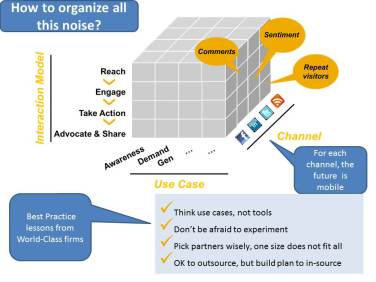 70 New domains are registered
70 New domains are registered- 168,000,000+ emails are sent
- 320 new accounts and 98,000 tweets are generated on Social Networking site Twitter
- iPhone applications are downloaded more than13,000 times
- 20,000 new posts are published on Micro-blogging platform tumbler
- 370,000+ minutes of voice calls done by Skype users
- 13,000+ hours of music streaming is done by personalized Internet radio provider Pandora
- Popular web browser FireFox is downloaded more than 1700 times
- Popular blogging platform WordPress is downloaded more than 50 times
- WordPress Plugins are downloaded more than 125 times
- 100 accounts are created on professional networking site LinkedIn
- 40 new Questions are asked on YahooAnswers.com
- 100+ questions are asked on Answers.com
- 1 new article is published on Associated Content, the world’s largest source of community-created content
- 1 new definition is added on UrbanDictionary.com
- 1,200+ new ads are created on Craigslist
- 1,600+ reads are made on Scribd, the largest social reading publishing company
Source: go-globe.com
Mobile + Social = Mobile Social Networking
The move to mobile computing and the rise of social networking are the two defining trends in computing right now. So what happens when those trends converge?
Social networks are going mobile in a big way. What is the data telling us….according to comScore, accessing social networking services is one of the fastest-growing activities on mobile phones. In September 2012, over 40% of all mobile phone users in the U.S. accessed a social network, performed a check-in, or tweeted on their phones.
The increase in mobile social networking is clearly being driven by the rise of smartphones. The iPhone 5x makes it even more easier and a much better experience. So the growth is going to be exponential – more users and more content. Embedded in the IOS 7 mobile operating is a new technology called iBeacon that can pinpoint your location to within a few feet.
IBeacon is software that enhances the location-tracking services in an iPhone, an iPad Mini, or any device running iOS 7. For retailers desperate to turn smartphones into a sales portal, it provides a quick way to target ads and other messages to engage consumers as they walk outside or through a store. For Apple, it’s a chance to collect valuable behavior data.
Mobile phones are primarily communication devices. And social is all about staying connected. So not surprisingly, the most common social networking activity on mobile phones is related to communications. E-mail is going to become a dinosaur technology…more of a formal archive than a real-time interaction tool. According to some teens, it’s more of a “lame-time” than real-time.
Mobile growth is not a new trend. But seems to have caught the major players like Dell, HP, Microsoft and other napping. Classic case of “Innovator’s Dilemma”. Amazing how managers don’t pay attention to mega-trends and simply watch the train-wreck unfold. Handling disruptive business model change is never easy.
Facts -> Interpretation -> Conclusions
Clearly we are not short on data. What we need are better big data platforms, paired with predictive and sentiment analytics, that allow us to correlate “cause and effect” say transactions with social media mentions; positive buzz with ad campaigns; uplift in certain age groups by certain influencers and so on.
Instead of learning which customers a company lost; it might be better to predict which customers a company might lose and present timely offers or products motivating customers to stay.
I was recently in a Best Buy and had a interesting social experience. I used Red Laser to do real-time price compare but eventually decided that the 10% discount on a product is not a good tradeoff of my time.
As I checked out, I asked about the return policy and was met with a hostile response….don’t take anything back without a manufacturer defect. It’s interesting that while companies like Target are “price matching” online competitors they are still not paying attention to the other aspects of the sale like easy (no questions) returns; unlimited return windows etc. The shopping experience is more than price!!!
 This “new customer interaction model” example illustrates how much work is ahead of traditional firms as they transform their business model in the Mobile + Social world.
This “new customer interaction model” example illustrates how much work is ahead of traditional firms as they transform their business model in the Mobile + Social world.
In the new “Mobile + Social” interaction paradigm… the traditional firms – banks, retailers, etc – better figure out the future of stores (and brick and mortar) in the age of digital products, same-day delivery and mobile apps that tell you in real-time what is out there.
This is definitely accelerating the “showrooming” phenom as traditional players become an expensive fronts for online retailers. Businessweek (October 28, 2012) had a great quote: “Best Buy pays for real-estate, sales people and cash registers and Amazon.com rings up the sale.” Showrooming put Borders out of business and brought Barnes & Noble to the brink.
So this is for real — what are you going to do about it. Technology convergence (cloud, mobile, social) is the catalyst for a bigger disruption.
References and Fact Sources
- Go-Globe
- Business Insider
- Less than one percent of the world’s data is being analyzed. The IDC study, “Big Data, Bigger Digital Shadows, and Biggest Growth in the Far East,” finds that little “big data potential” is being realized globally. As the digital universe reaches 40 zettabytes by 2020, it will have increased 50-fold since 2010. IDC recently raised its forecast by 5 ZB. –>READ THE FULL ARTICLE
Related articles
- Big Data To Drive $232 Billion In IT Spending Through 2016 (techcrunch.com)





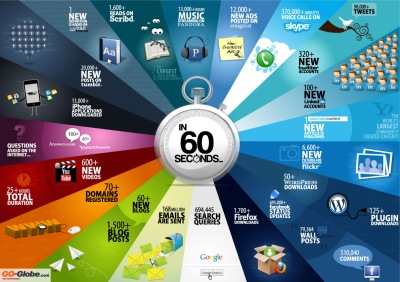
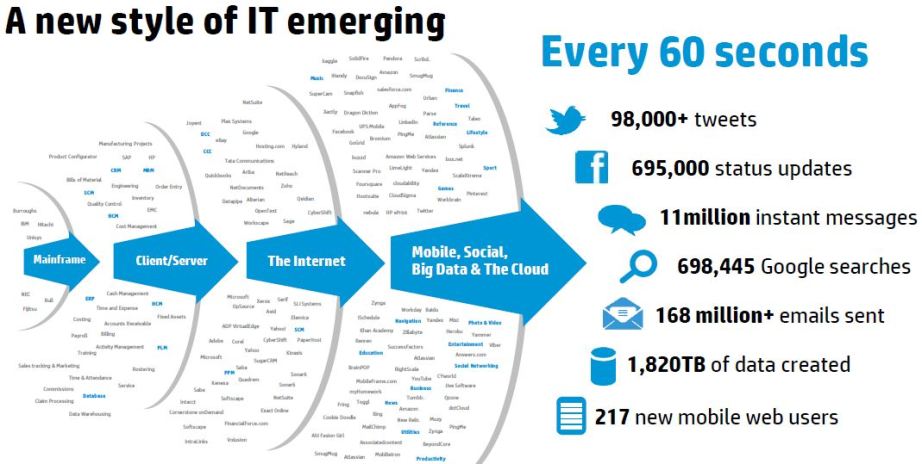
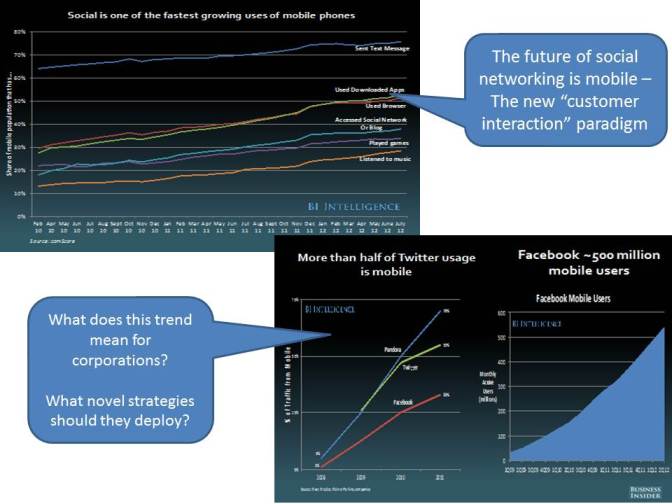
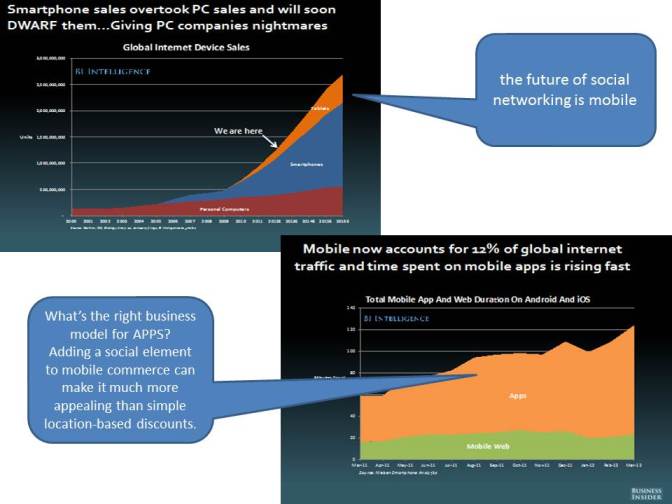

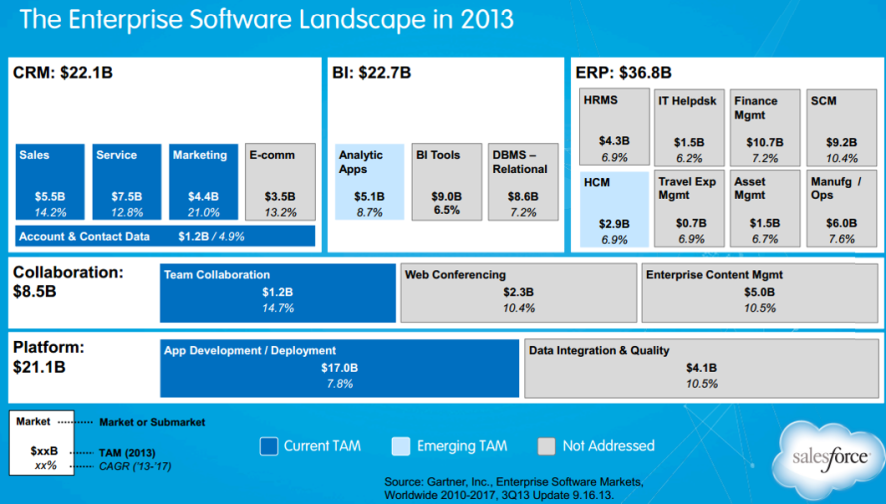
Reblogged this on IT Lyderis.
LikeLike
Big Data – Mobile and Social Sources: Structured, Unstructured, and Semi-Structured Data
“Big Data” requires new data management and analytic approaches because:
– Volume: Large volume of low information-density data – requires cheap scale-out storage
– Velocity: High velocity of data capture – requires rapid ingestion
– Variety: Wide variety of rapidly evolving data types – requires highly flexible storage
– Value: Extracting signal from noise – requires scale out query processing
The “Big Data” Market opportunity is at its core an Analytics opportunity
Broader Data Set: Understand what Happened, Why, Predict what will happen
Better Analytics: Based on acquiring, capturing, organizing all/most of the relevant data
Deeper Analytics: New analytic methods on new kinds of data
LikeLike
Good one. I appreciate you.
LikeLike